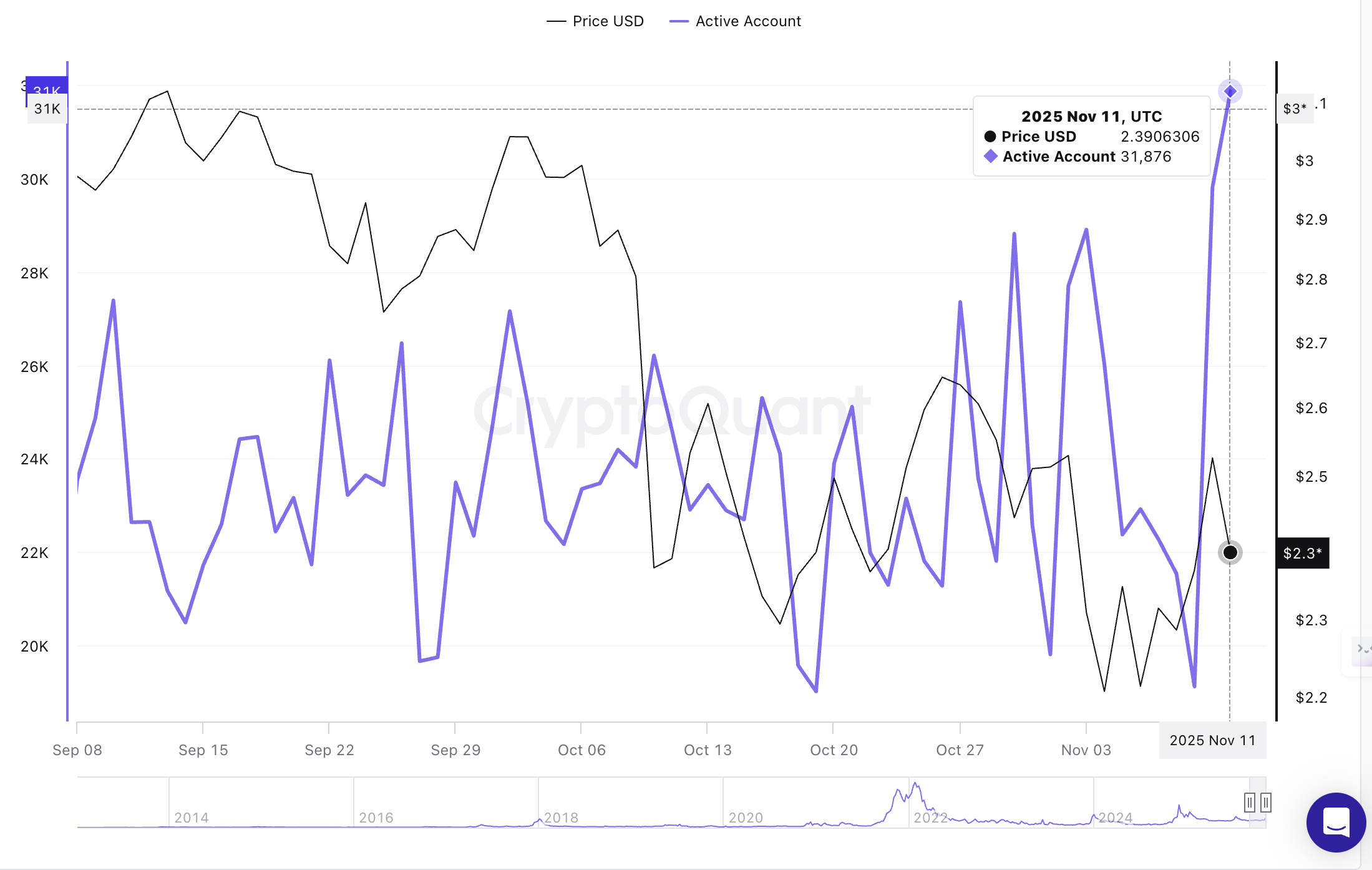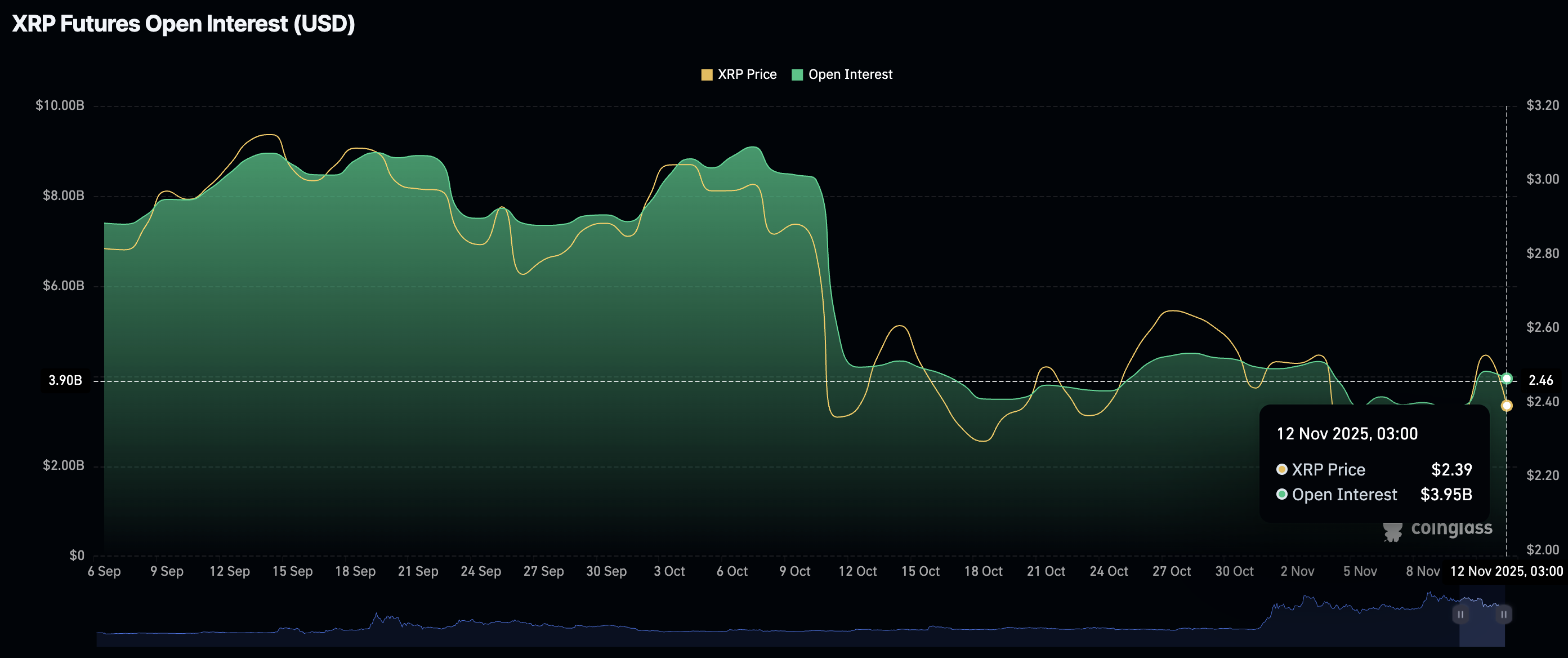Ripple Price Forecast: XRP gains momentum driven by risk-on sentiment, on-chain activity
- XRP bulls aim for a breakout above the 50-day EMA as the cryptocurrency market rebounds on Wednesday.
- Active addresses on the XRP Ledger increase by 40% to approximately 32,000, signaling growth and adoption within the ecosystem.
- Retail demand for XRP remains significantly subdued, with the Open Interest sliding below $4 billion.
Ripple (XRP) is experiencing a mild rebound, trading above $2.40 at the time of writing on Wednesday. The uptick can be attributed to risk-on sentiment, as Bitcoin (BTC) extends gains above $104,000.
Still, sentiment in the derivatives market remains subdued, calling for caution until a steady uptrend is established.
XRP active addresses surge, backing bullish outlook
The number of active addresses on the XRP Ledger (XRPL) has increased by 40% to approximately 32,000 as of Tuesday from 19,000 on Sunday. This surge indicates rising user activity and engagement within the network, which in turn increases on-chain demand for XRP and the odds of price momentum.
A steady uptrend in active addresses also supports the XRPL's utility and adoption – key factors driving long-term growth and investor confidence in the ecosystem.

Meanwhile, retail demand for XRP has not picked up following the October 10 deleveraging event. CoinGlass data on the XRP derivatives market shows the futures Open Interest (OI) averaging $3.95 billion on Wednesday, down from $4.11 billion the previous day and $8.36 billion on October 10.
A steady increase in OI is required to support XRP's short-term recovery, indicating that investors have confidence in the token and the ecosystem and are willing to increase their risk exposure.

A subsequent sharp drop in the OI-Weighted Funding Rate metric to 0.0024% on Wednesday, from 0.0084% the previous day, coincides with the low retail demand. This means that traders are leaning bearishly, piling into short-term positions due to a lack of conviction in a sustainable bullish outlook.

Technical outlook: XRP edges higher as bulls tighten their grip
XRP is trading above $2.40 at the time of writing on Wednesday, supported by a strengthening short-term technical structure, the surge in on-chain activity, and improving sentiment in the broader cryptocurrency market.
A buy signal maintained by the Moving Average Convergence Divergence (MACD) indicator underpins XRP’s short-term bullish outlook. If the blue MACD line holds above the red signal line as the indicator generally rises, risk appetite will increase, driving risk exposure.
The Relative Strength Index (RSI) is poised to enter the bullish region above the midline, improving the odds of a sustained rebound. Key areas of interest for traders include the 50-day Exponential Moving Average (EMA) at $2.55, the 200-day EMA at $2.58 and the 100-day EMA at $2.64, all of which highlight key resistance levels.

If investors start to realize profits early and dampen the uptrend, a short-term correction below $2.40, the nearest support, may follow, bringing the next levels at $2.23, tested on Sunday, and $2.07, tested on November 4, within reach.
Ripple FAQs
Ripple is a payments company that specializes in cross-border remittance. The company does this by leveraging blockchain technology. RippleNet is a network used for payments transfer created by Ripple Labs Inc. and is open to financial institutions worldwide. The company also leverages the XRP token.
XRP is the native token of the decentralized blockchain XRPLedger. The token is used by Ripple Labs to facilitate transactions on the XRPLedger, helping financial institutions transfer value in a borderless manner. XRP therefore facilitates trustless and instant payments on the XRPLedger chain, helping financial firms save on the cost of transacting worldwide.
XRPLedger is based on a distributed ledger technology and the blockchain using XRP to power transactions. The ledger is different from other blockchains as it has a built-in inflammatory protocol that helps fight spam and distributed denial-of-service (DDOS) attacks. The XRPL is maintained by a peer-to-peer network known as the global XRP Ledger community.
XRP uses the interledger standard. This is a blockchain protocol that aids payments across different networks. For instance, XRP’s blockchain can connect the ledgers of two or more banks. This effectively removes intermediaries and the need for centralization in the system. XRP acts as the native token of the XRPLedger blockchain engineered by Jed McCaleb, Arthur Britto and David Schwartz.

